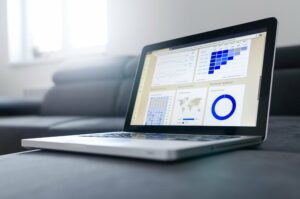When you work in financial planning and analysis (FP&A), there’s always a push to dig deeper and reveal more insights from your data. At the same time, you constantly search for more efficiency in your process, bringing in more data with less investment while maintaining accuracy.
Those are major challenges, but modern technology is empowering FP&A experts to exceed expectations in many ways. At the heart of all of that technology is the new revolution: AI.
AI at Its Best
These days you can find innumerable applications for AI in anything from art to politics. While every form of AI has its uses, from a structural standpoint, AI performs its best when dealing with large data sets and calculations.
This largely stems from how AI is structured in the first place.
Machine Learning and Neural Networks
There are many types of artificial intelligence, but most of them fit into two categories: machine learning and neural networks. While there are plenty of distinctions between these types of AI, they have something fundamental in common.
Both types of AI run on optimization math problems. At the risk of oversimplifying, machine learning and neural networks operate by performing calculus analytics on large pools of data.
Whether the AI in question is writing text, generating images, or just crunching numbers, it’s doing the same type of math. As a result, AI applications that focus on mathematical outputs have fewer conversions and fewer places to get confused or go wrong.
In terms of FP&A, big data AI performs complex calculations in order to help you track KPIs, pursue goals, and anticipate how different variables will impact the bottom line.
AI in FP&A
In general, AI holds a lot of promise for FP&A simply because AI is built from math in order to do math. Still, we can be more specific and look at some of the direct applications where AI transforms data into insights.
Forecasting
A lot of FP&A centers on forecasting. If you can anticipate financial trends, you can make informed decisions that stay ahead of market shifts. Ultimately, this is where the big money stands to be made.
AI perfectly fits into the role of forecasting. It looks deep into your large data sets in order to glean insights that inform models and make sound predictions. Because AI can process so many calculations so quickly, it often reveals patterns that would never emerge from purely human analysis.
AI forecasting is faster, more insightful, and easier to use than other analytical processes. On top of that, AI can also produce real-time (or near-real-time) forecasting that is easy to understand. You can put this to work to inform budgeting, resource allocation, risk management, and all forms of decision-making.
Simulation
Simulation is certainly related to forecasting, but the two are not exactly the same. In simulation, you can create “digital twins” to see how a single change alters a model’s outcomes.
With this idea, you can deeply explore specific KPIs or decision trees. At a basic level, you can look at how different investment strategies might play out over time.
Neural networks actually take this a lot further. Starting with the same data set and premises, neural networks can simultaneously explore a large number of variables and their impacts on outcomes.
Using the example of an investment strategy, you could create digital twins to compare different investment portfolios. The neural network can look at a ton of different factors — including things like supply shortages, emerging markets, and black swan events — to see how each strategy holds up in different scenarios.
Efficiency
It’s easy to understand how AI might fit into big data and analytics. After all, AI exists to crunch numbers.
While that holds true, it’s just as easy to overlook the myriad of efficiency opportunities related to AI. Various tools can offload work from human hands across countless applications.
By taking over data entry, AI eliminates the primary source of data errors (which are human errors).
At the same time, you can leverage AI to create insight displays, automatically graphing and tabulating results to make them easier to understand at a glance.
You can even incorporate large language models to do things like automating emails or writing analytical summaries. Combine that with AI assistance and organization tools, and you can save time on calendar management, running meetings, and countless other small tasks.
Even while AI does the heavy lifting in your analytical process, it also improves efficiency in countless other areas of work. It’s transforming most workplaces. FP&A simply stands to benefit even more with its heavy emphasis on big data and analytics.
When people suggest that AI is the future, the statement holds more power and truth than most of us realize. AI tools already improve the fundamentals of FP&A. As these systems get better and more powerful, the benefits stand to grow.




